#research manuscript
Explore tagged Tumblr posts
Text

*BJPMR: Present Your Manuscript In A Leading Journal.**
Publishing your research in a respected journal is crucial for gaining recognition in the academic community. The **British Journal of Pharmaceutical and Biomedical Research (BJPMR)**, ISSN 2456–9836, offers a platform for researchers to present their findings to a global audience. In this blog post, we will explore how submitting your manuscript to BJPMR can enhance your academic profile and impact the field of pharmaceutical and biomedical sciences.
## Submit Your Manuscript To BJPMR
Submitting your manuscript to BJPMR is a significant step in sharing your research with the world. The journal accepts a variety of article types, including original research, reviews, case studies, and short communications. Each submission undergoes a rigorous peer-review process to ensure the quality and validity of the research published. Familiarizing yourself with BJPMR��s submission guidelines is essential for a smooth submission process. By following these guidelines, you increase the likelihood of your work being accepted and appreciated by the journal’s readership.
## Attract A Global Scholarly Audience
Publishing in BJPMR connects you with a diverse global audience of scholars, researchers, and professionals in the pharmaceutical and biomedical fields. The journal has a broad readership that includes both established experts and emerging researchers. By submitting your manuscript, you can share your discoveries with individuals who are genuinely interested in your work. This exposure can lead to valuable collaborations, increased citation rates, and greater visibility in your area of expertise. It’s an opportunity to influence and engage with the scientific community on an international scale.
## Publish In A Renowned Journal
BJPMR is recognized for its commitment to publishing high-quality research in pharmaceutical and biomedical sciences. Being published in a renowned journal enhances the credibility of your work and demonstrates its significance within the field. Authors benefit from the journal’s reputation, which can lead to more significant recognition and respect from peers and institutions. This credibility can also positively affect funding opportunities, career advancements, and professional relationships. By choosing BJPMR, you align your research with a reputable publication that values excellence.
## Amplify Your Research’s Academic Impact
One of the primary goals of publishing research is to maximize its impact within the scientific community. BJPMR provides authors with the tools to amplify their research’s academic influence. The journal’s wide distribution ensures that your work reaches scholars worldwide, increasing its potential to be cited in future research. Furthermore, BJPMR emphasizes impactful research that addresses current challenges in pharmaceuticals and biomedicine, allowing your findings to contribute to advancements in these fields. By publishing in BJPMR, you enhance the relevance and importance of your work.
## Present Discoveries To Leading Experts
Publishing in BJPMR allows you to present your discoveries to a panel of leading experts in the pharmaceutical and biomedical fields. The peer-review process is conducted by knowledgeable reviewers who can provide constructive feedback, enhancing the quality of your manuscript. Their insights can help refine your research and ensure that your findings are robust and well-supported. Engaging with experts not only improves your work but also opens avenues for collaboration and further exploration of your research topics.
## Boost Credibility Through Peer Review
Peer review is a cornerstone of academic publishing that ensures the integrity and validity of published research. BJPMR follows a rigorous peer-review process, where submitted manuscripts are evaluated by experts in the field. This process adds a layer of credibility to your work, as it has been vetted by knowledgeable peers. Having your research published in a peer-reviewed journal enhances your professional reputation and demonstrates your commitment to producing high-quality, reliable findings. This credibility can significantly impact your future career opportunities.
## Connect With International Research Networks
BJPMR serves as a bridge to international research networks, connecting authors with other scholars in the field. By publishing in this journal, you join a community of researchers dedicated to advancing pharmaceutical and biomedical sciences. This network can facilitate collaborations, grant opportunities, and the sharing of ideas and resources. Engaging with fellow researchers through BJPMR can lead to innovative projects and initiatives, further enhancing your academic career and research contributions.
## Build A Strong Academic Portfolio
A strong academic portfolio is essential for career advancement and recognition in the academic community. Publishing in BJPMR adds significant value to your portfolio, showcasing your research capabilities and contributions to the field. A well-documented publication record demonstrates your commitment to research and your ability to engage with contemporary issues in pharmaceuticals and biomedicine. This portfolio can be instrumental when applying for positions, grants, or other academic opportunities, setting you apart from your peers.
## **Frequently Asked Questions**
### What types of articles can I submit to BJPMR?
BJPMR accepts various types of articles, including original research papers, reviews, case studies, and short communications. Each submission should align with the journal’s focus on pharmaceutical and biomedical research. Ensure that your manuscript adheres to the submission guidelines outlined on the BJPMR website.
### How long does the peer-review process take at BJPMR?
The peer-review process at BJPMR typically takes between 4 to 8 weeks. However, the duration may vary depending on the complexity of the submission and the availability of qualified reviewers. Authors will receive updates regarding their manuscript status during this period.
### Are there any fees for publishing in BJPMR?
BJPMR may impose publication fees, which can vary based on the type of article and additional services required. Authors should check the journal’s website for the most current information regarding fees and potential waivers available for authors from developing countries.
### How can I increase my chances of publication in BJPMR?
To improve your chances of publication, ensure your manuscript is original, adheres to BJPMR’s submission guidelines, and is well-written. Highlight the significance of your research findings and engage constructively with reviewer feedback during the revision process. A polished manuscript increases the likelihood of acceptance.
### What are the benefits of publishing in BJPMR?
Publishing in BJPMR enhances your research’s visibility, credibility, and impact within the scientific community. Authors gain access to a global audience, connect with other researchers, and contribute to advancements in pharmaceutical and biomedical sciences. A publication in BJPMR significantly boosts your academic profile and portfolio.
## **Conclusion**
Submitting your manuscript to the British Journal of Pharmaceutical and Biomedical Research (BJPMR) is a valuable opportunity for researchers to gain recognition and connect with the global academic community. By following submission guidelines, engaging with leading experts, and enhancing the credibility of your work through peer review, you can maximize your research’s impact. Additionally, publishing in BJPMR allows you to build a robust academic portfolio that reflects your contributions to the field.
Share Your Research: Submit to BJPMR
For researchers eager to share their valuable findings, we invite you to submit your manuscripts to the British Journal of Pharmaceutical and Medical Research. Please send your submissions and inquiries to [email protected]. We look forward to reviewing your work and contributing to the advancement of biomedical science.
“Subscribe to BJPMR YouTube channel for Research Insights”
Don’t forget to subscribe to the **BJPMR YouTube channel** for the latest updates and insights in biomedical research. By subscribing, you’ll gain access to expert interviews, research highlights, and valuable discussions on the latest breakthroughs in the field. Stay connected with a global community of researchers and professionals, and never miss an opportunity to learn about cutting-edge discoveries that are shaping the future of healthcare. Whether you’re a seasoned researcher or just starting out, the BJPMR YouTube channel is an essential resource for staying informed and inspired.
#plagiarism#bjpmr#bjbmr#manuscript#journal#scopus#pubmed#article#case study#research manuscript#review article
0 notes
Text
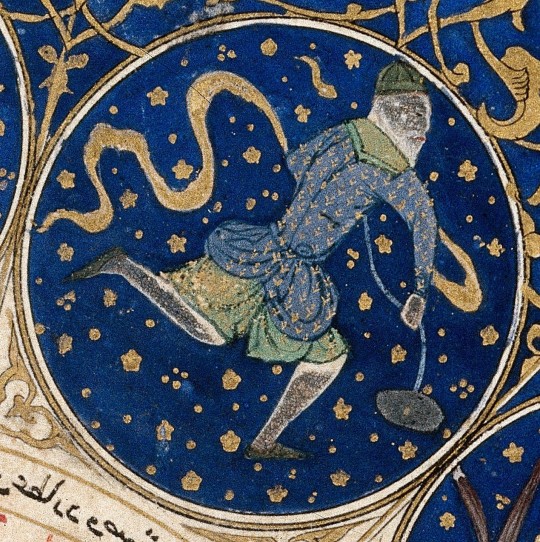


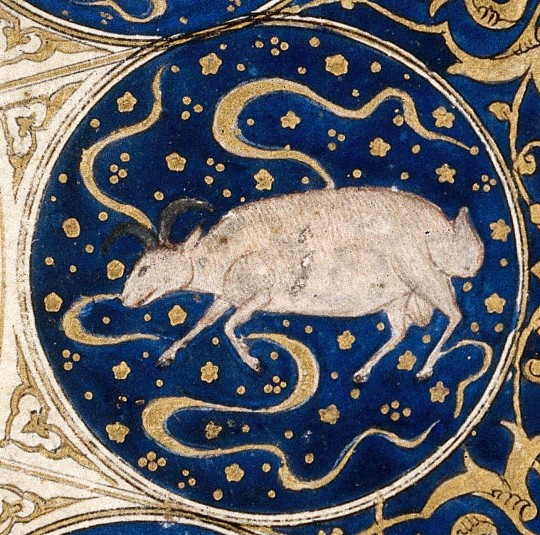
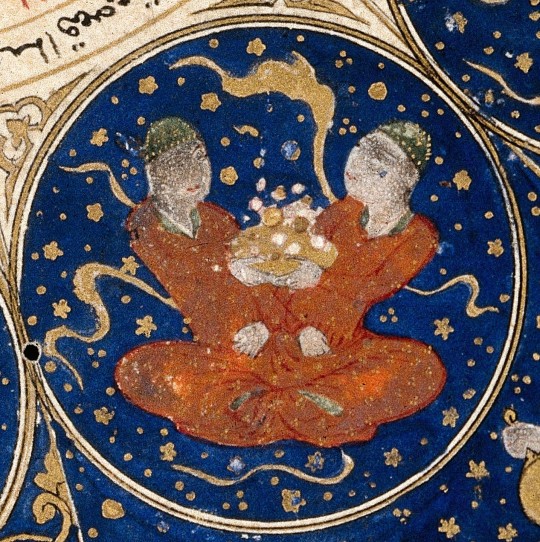
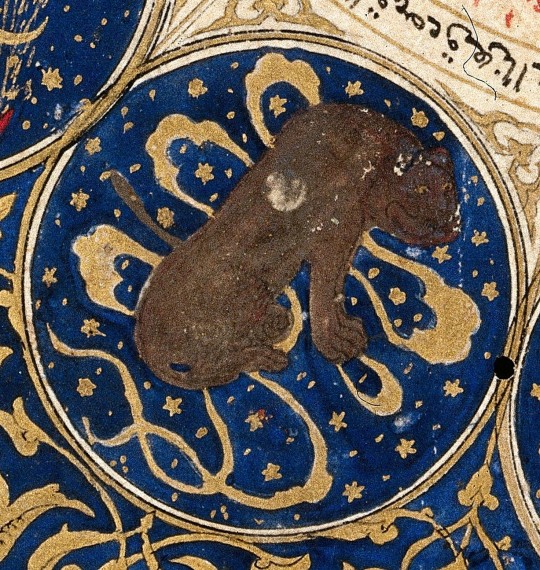
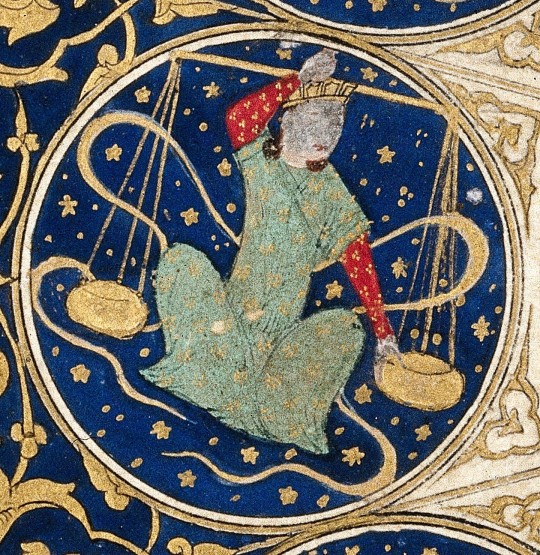
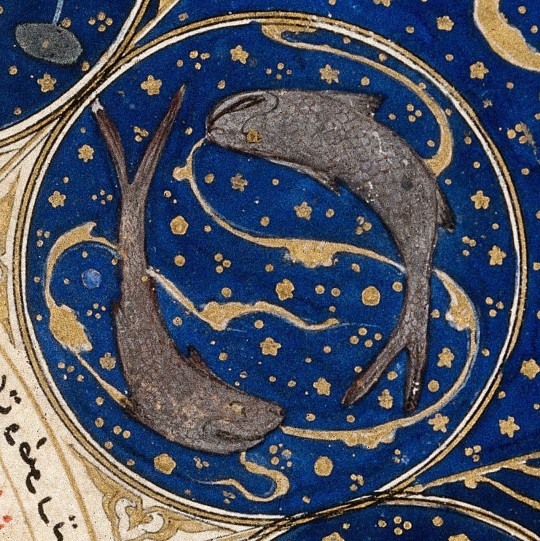
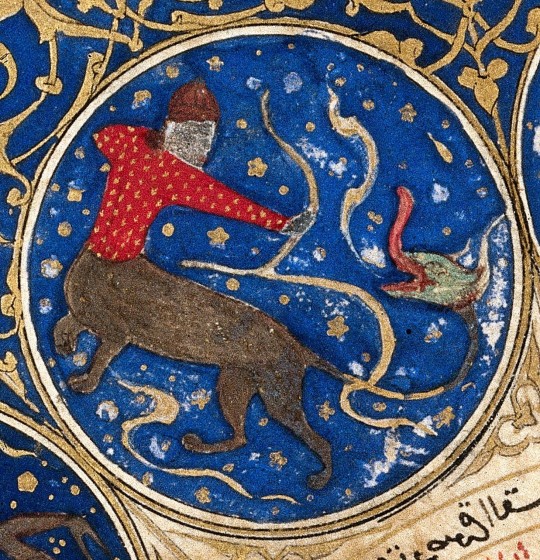
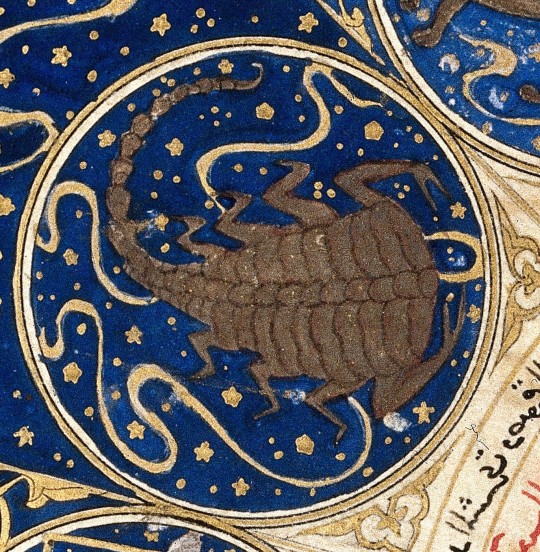


The twelve signs of the zodiac, from the Horoscope of Prince Iskandar, grandson of Tamerlane, the Turkman Mongol conqueror. Apart from being a horoscope, the manuscript of 1411 is an exquisite work of art and an exemplary production of the royal kitabkhana "publishing house" or "workshop."
The manuscript is lavishly illustrated and reflects the efforts of a whole range of specialists: astronomers (among them Imad ad-Din Mahmud al- Kashi), illuminators, gilders, calligraphers and craftsmen, and specialists in paper-making.
The images and info come from the always fascinating Open: Wellcome Collection on JSTOR, which is open access with no login needed! Creative Commons: Attribution.
#zodiac#horoscope#astrology#illuminated manuscript#persian art#iranian art#open access#creative commons#research#art history#jstor
2K notes
·
View notes
Text
started a new job recently as a research assistant for a gay Latinx professor in my grad program, and while I definitely don't have the time to be doing my own research, working with this professor on his book projects has been so affirming and healing. i'm working on a book he hopes to publish soon that is full of interviews of gay and trans Latine men...and it is so fucking awesome. I feel so seen by the words I am reading, and I feel tears spring to my eyes looking at the photographs of these men. They look like family members, distant cousins, and family friends. They look so happy and full of confidence. I see myself in their eyes, recognizing the "fish" shape in our eyes that is so distinctly tied to Latines. One of the men in the book is a pup! And it is so beautiful seeing his smile as he holds his pup mask.
I have met very few queer latines. I don't know what it's like to have the tio or tia that has some secret aura to them, that "no se habla" vibes where everyone knows they're queer but just won't acknowledge it. Hell, this professor I'm working with is the first gay Latine man I've ever spoken to. I wish I had a community of gay Latines. I hope I am able to access that one day :)
#muerto talks#just rambling#reading thru this manuscript has me feeling some intense emotions#ive always been the person other queers look up to#and i always wish i had someone i could look up to#this reminds me that when im back home for the summer i should totally connect my emotional support gay professor from undergrad#i have never felt such acceptance and joy man#life be good when you have an older gay BIPOC man in your life#LIKE PLEASE PLEASE PLEASE ADOPT ME PLEASE PLEASE PLEASE#this makes 3 gay male professors i know that i look at with very big round and wet eyes#my research professor is also a gay man and im like so captivated by him in class#i be on cloud 9 when i say something in class and he continously references it#LIKE YES I WON!!!#I WON!!!!
128 notes
·
View notes
Text
Work on a scientific article
What it actuallly entails:
Come up with an idea, define an interesting problem
Do thorough literature research. Maybe similar stuff was already done. Define the knowledge gap well.
Plan in detail, how we can solve the problem, design experiments
Reach out to potential collaborators, agree with them on a plan
Buy necessary equipment, chemicals
Do pilot experiment, optimize the conditions to get reliable data
Perform experiments, calculations, make everything multiple times so it's reliable
Analyze the data
Urge collaborators to deliver their parts
Coordinate your progress with the collaborators
Manage the collaborations, organize meetings
Be diplomatic, you don't want to make enemies in academia
Agree with direct colleagues, who worked on it, what will be the message of the article. Will it be a long story and we need to add some more data? Or will it be short and right to the point and we write a short "letter"?
Do literature research again. Maybe new stuff appeared, and for sure your data must be confronted and discussed with already known facts.
Write the first draft of the article
Send it around for feedback, first only to direct colleagues from your lab
Incorporate the feedback, maybe do more experiments and more analysis
Rewrite the manuscript
Send it around the second, third, fourth, fifth... time
Incorporate the feedback
Send the manuscript to all collaborators.
Wait for the feedback, urge everyone to give it, maybe you don't have all data from all the collaborators yet
Incorporate feedback
Prepare the manuscript for journal submission
Get approval from all co-authors
Submit the manuscript
Wait for editor response, hopefully they send it to reviewers. If not, you need to rewrite a bit the article to adhere to the new journal's format and send somewhere else.
Get reviewers' reports, deal with them, reply truthfully, make effort to explain everything even if you know that the reviewer's suggestion is just impossible or irrelevant. Be diplomatic.
Maybe you need to do an additional experiment, analysis, or rewrite a major part fo the manuscript. This can take months.
Submit revised manuscript with all the changes
Wait for editor's nad reviewers' comments in the second round. You can get many rounds of review and still get rejected.
Finally get a "Congratulations, your manuscript has been accepted for publication"
Pop a shampagne! You deserve it!
What part of this do you usually do in different career stages:
BSc. and MSc. students: Perform experiments and analyze data
PhD students: Do all the experimental and analysis parts, write the manuscript, discuss with their supervisor and direct colleagues, incorporate feedback. But does not have to come up with their own idea and manage collaborations and diplomacy.
Postdocs: Do literally everything on the list
Group leader/Professor: Do the thinking and managing parts, help with writing and feedback, provide discussions and insight. Do not perform actual experiments and analysis.
Being a postdoc is the transformation between the student and the group leader.
As such, we just have to do all these tasks. It's stressful. It's challenging. It's definitely not boring. I am taking every opportunity to get a student, who can help with the experimental repetitions so I have time for all the other stuff.
#science#women in science#research#postdoc#group leader#academia#phd student#PhD#manuscript#article#publishing#scientific publication#overload#overworked#tasks#to do list#insights#biophysics#physics#biology#stem#original content
48 notes
·
View notes
Text


crowded hellmouths
in a manuscript of jacobus de theramo's belial, germany, late 15th c.
source: Hannover, GWLB, Ms I 57, fol. 61r and 4v
#@medievalists/art historians is there any established term for these demonic knee/crotch/belly/butt faces?#there's a rather insufficient german wikipedia article on the phenomenon where they call it “Bauchgesicht” (belly face)#lmk if you know of any good research about it#15th century#medieval art#hell#hellmouth#devil#demons#bauchgesicht#demonic body faces#belial#medieval illumination#medieval manuscript#medieval studies
181 notes
·
View notes
Text

gilserge yuri & Saint seiya thinf sorey

#ok i need to actyally research more on girl uniforms in 1800s pray for me#I just based these off of the ones in the cherry blossom manga#manuscript#kaze to ki no uta#saint seiya
27 notes
·
View notes
Text
If you're new to academia, my biggest piece of advice is to pick an insignificant hill to die on and commit to the bit for the rest of your academic career. This absolutely will not help you - it will in fact make your experience significantly worse - but it WILL make you fit in with your peers.
#academia#science#research#bonus points of it's petty#for frame of reference#mine is an adamant refusal to ever use the word “thus”#i hate it and will never willingly allow the word in any manuscript that has my name on it#i almost threw out an entire draft of my honours thesis because my supervisor put it in#i also do have a pet theory regarding [redacted] but the paper isn't published yet so i can't talk about it
18 notes
·
View notes
Note
I asked cryptotheism for some research tips and they pointed me to you. Know any good late medieval, especially 15c middle english texts on magic?
I've got this one: https://search.library.yale.edu/archives/11743426 Takamiya MS 33. It's a Middle English edition of the Secretum Secretorum and other related works, dated to ca.1475-1499.
George Ripley was also a fifteenth-century alchemist who wrote in Middle English. The Ripley Scrolls are all from the sixteenth century and later, but written in Middle English.
That's what I've got off the top of my head. There's not a lot of occult stuff written in Middle English over Latin, at least not that I know of. This may be a little too obvious (and not English), but definitely look through Agrippa if you haven't already. His work synthesized all the occult material of the previous centuries into a unified system.
18 notes
·
View notes
Text
Sultan Murad IV, redoubtable warrior and calligrapher? A calligraphic piece in Isl. Ms. 441
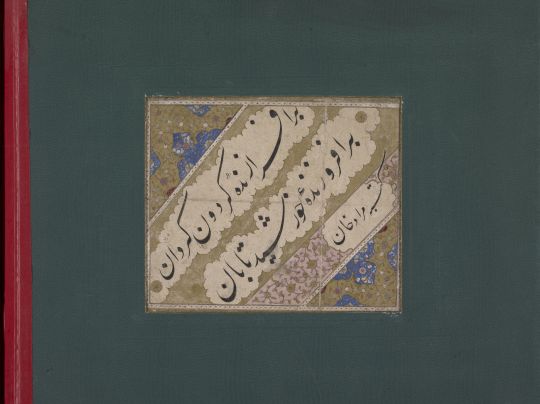
Calligraphic piece in nastaʻlīq (talik) signed by the calligrapher, most likely the Ottoman Sultan Murad IV (r.1623-1640). Fol.4b in Isl. Ms. 441, Islamic Manuscripts Collection
Enjoy this post from Sumeyra Dursun, 2023 Heid Fellow, drawn from her research in the Islamic Manuscripts Collection. Sumeyra is a doctoral candidate in the history of Islamic arts at Yildiz Technical University in Istanbul.
#libraries#archives#special collections#special collections libraries#libraries and archives#islamic manuscripts#special collections and archives#hat sanatı#hattat#yazmalar#yazma eserler#ottoman culture#ottoman history#turkish arts#turkish history#research fellowships#fellowships#heid fellows
21 notes
·
View notes
Text

This will one day be a much larger post (I've already started working on it) as thoughts and details settle, but I wanted to make some quick notes (who am I kidding, this won't be a short post) here so that you guys know where my thoughts are. Just as I personally also ascribe (though I do not assume people to do the same, of course!) to the theory of ZL being a Sun-King (and potential brother to) alongside King Deshret and then Remus and/or Decarabian for numerous reasons after personally researching it myself, I also am being faced with too many coincidences when it comes to Guizhong possibly being one of the three moon sisters (or at the very least, a Seelie), who I believe to be part of a 'Seven' alongside the aforementioned four Sun-kings. Which, if the returning and reinforced leaks of Guizhong's likelihood of playability is to even be roughly taken as a possibility, then there needs to be reason for it. There's a popular theory that the Moon Sisters were shades of the Primordial One alongside Istaroth, if that is true, there may be reason in there to bring her back (even for the Tsaritsa), considering I feel like a big endgame next to the arc of Khaenri'ah, is/will be a faceoff with Celestia. Any way, this is a little incoherent, but let me put down a little list of things I want to touch on, but just can't write the full post of yet. These are just my little (ha!) thoughts.
Edit: Nevermind, it got long, it's very long, but if you like your lore and you're interested in knowing how looney deep I went with this, keep on reading! I will however, be making more parts to this as I continue on and gather lore bits. I also like documenting my journey of meta, so I can see what I thought six months prior, you know? Enjoy!
The Chasm. I'll forever stay stuck on how this part of the 'Stories of Remote Antiquity' OST plays during Guizhong's death scene. Our beloved Hoyoverse doesn't do anything by coincidence, they never once have. If they wanted to do something tragic, there are other Liyue OSTs out there that will punch you in the gut equally as much if not more. But this? This is oddly intentional. Ever since, I've been trying to figure out any potential ties to it, and with the Chenyu Vale theory out and about, claiming Guizhong to be the unnamed god (female and ever kind) that the three adepti served, another tie may be created through the fact that the people from Chenyu Vale originate from the Chasm (there's numerous tidbits as to why people tie her to Chenyu; I'd suggest the video, it's easier for now!). I also think, on some level, that if she is tied to the origins of the Chasm in some way, that it was her "descension" (or 'fall') that led to its unique creation. I don't know how the dots connect, but I've identified the dots, kind of, maybe.
The insane references to the night/moon. Her color scheme, the night sky in her sleeves, and the fact that she is inherently tied to the Glaze Lilies (which are known to bloom only at night). Furthermore, if you recognize and/or adhere to the fact that the Rite of Parting does not contain ingredients that befit Rex Lapis but instead seem to very much align with her, then there's also the Noctilucous Jade (I literally just realized that it's jade) which is known to glow at night. And then there's her inventions, which are all golden and sun-like in color scheme and I think of that line of lore about the Moon Sisters: "These three luminous moons shared but one love, the stars of daybreak." Daybreak, gold, golden, light, the sun. I'm losing my mind as I'm typing this. Any way, I digress, Noctilucous Jade is found underground, in caverns and more specifically, is rather abundant in the Chasm (my dearly detested). I've accepted that I just have an affinity to characters who seem to have either a direct or indirect tie to this place. I'll never escape it, I'll become one of its victims. /breathes, let me move onto the next point.
The Glaze Lilies. Now, while we know the Goddess of Flowers isn't a Moon Sister (this'll get tied in, I promise, please try to follow me here), the fact that she is a Seelie is important enough, for the three Moon Sisters were said to have lived alongside the race of the Seelies. This might mean some shared traits. Now even Seelies are noted to have an intricate tie to the moon, and a thing that the Goddess of Flowers was known for, was that when she danced, Padisarah flowers bloomed under her feet. 'But Sae, the Glaze Lilies didn't bloom when Guizhong danced', no no, I'll get there. It was specifically when she danced, or was around them. What I'm doing is tying these flowers to her more specifically, which is further enforced by the fact that after the Goddess of Flowers died, the Padisarahs dwindled in number until they became fully extinct. The ones you see today are not the real ones, they are replications created by Rukkhadevata herself in memory of her former friend. I note this, because a similar thing has occurred to the Glaze Lilies. In the aftermath of Guizhong's death, the Glaze Lilies that once populated the Guili Plains and Dihua Marsh have dwindled into extinction, and the only reason why they are found in Liyue today in some capacity, is because of Morax' direct influence (last few lines; and yes, I'm aware this is 'unreleased canon' at present, but none in this contradicts our current lore in any way, so I bear no qualms in making even loose use of it), but this seems to also insinuate that the Glaze Lilies that we see today, are not the real ones. So in essence, when the moment of the departure/death of the Goddess of Flowers came about, a specific flower associated with her came to perish as well. Is it a concept of, if the creator (one tied so intricately to the moon) is gone, do her creations wither away much in the same way? Now to mention one final thing, is the flower that most closely resembles the Glaze Lily: the Nilotpala Lotus. Not only do they share a color palette and very similar design, they share the peculiar behavior of blooming only at night, when subjected to the light of the moon itself. Now the most important thing to note here, is that the Nilotpala Lotuses were literally created and bloomed when the Moon Sisters stepped foot into Teyvat. One could, in essence, see the two flowers as 'lunar flowers'. Listen, I've never quite liked coincidences.
Dust. Now, this is a little more of a 'loose' connection and also me slightly rambling about something else that intrigues me to the moon and back (no pun intended), but it has my mind going insane nonetheless. Also, the very end is a reach, I'm aware, we know next to nothing about the Shades. Any way, Guizhong is inherently tied to two things: dust and alchemy. And these two become even more important when combined. Now, you'll have to strap in and wait for the little 'tie-in' at the end, because this can take a little bit. Her God name is 'Haagentus', which stems from Haagenti, one of the demons from the Ars Goetia. Within demonology, Haagenti is firmly tied to alchemy and transmutation, and while I'm not going to focus too much on specifics outside of the game, it is noted that 'he makes men wise by instructing them in every subject, transmutes all metals into gold, and changes wine into water and water into wine.' Sound fitting enough already, no? Now, outside of her name, let me hone in on some really clear alchemy references that you can find on and around her person. When you look at her design, Guizhong has numerous accessories that seem to be very closely resembling alchemy keys or symbols of some kind (this is not my area of expertise, but I will make it so if need be after this post, unless someone recognizes these symbols), primarily the 'pin' that holds the main portion of her hair back, a tattoo on her upper back, the 'petals' on her sleeves, and what has me most intrigued are the following two things: the symbols actively floating around her (and for clarity, see her cutscene, timestamped, shows them to be animated and coming from her and not the Cleansing Bell), and her anklet in a similar shape (which also seems to be a unique design in Genshin so far). Now, with alchemy established, let me hound on something that ties dust into alchemy, and what it means within Teyvat. Yes, I'm going to touch on its importance within the Art of Khemia, an advanced form of alchemy that is said to have been closely tied to Khaenri'ah (and might I note: Guizhong is noted to have numerous Ruin Guards, Khaenri'an technology, in her domain roughly 2000 years before they ever reached the surface of Teyvat's). Any way, this is where I need to touch on Albedo's character details, specifically the following:
"The universe is heaven reversed, and the earth is a dream lost to time. This is dust, the most basic form of complex life." As if to provide evidence for this claim, Albedo lifted the burnt ash of the flower that once grew atop a Dendro Slime's head. Seconds later, a Cecilia sprouted forth from the ash in his hand. "And this... is new birth."
And then from the caption in Collected Miscellany - "Albedo: Kreideprinz":
"Soil and chalk, the universe and earth, pure dust and the birth of human life... There is no mistaking it."
A little tie to the creation of life, interesting, indeed. Alright, now while it's not canon by any means, it is a popular enough theory that the Moon Sisters were three (out of four) of the Primordial One's Shades. And one of them is noted to have been in part responsible for the creation of life. Now I'm not tying this Shade into Guizhong, but I'm simply drawing the potential importance of her title of 'God of Dust' into the equation, or simply to reiterate the importance of dust within the existence of Teyvat as a whole as it stands today. And what it might mean if she was indeed, a Moon Sister (to tie into this, the 'Sun-Kings' are also firmly tied to the creation of life; I believe most of this 'generation' of gods would be). Anyway, continuing!
Now, there is a reference (which I do have to note is a legend and nothing more, but we'll take it to heart) that tells me that it's certain that at least two Moon Sisters are 'confirmed' dead, by account of there being only one moon left in Teyvat's sky, instead of three. The legend notes that two 'shattered into dust' (hello, dust) and subsequently disappeared which seems to be indicative of their death, and one secluded herself within the Lunar Palace and was never seen again. Now the tale of legends recounts that the moon we still see is tied to the corpse of a Moon Sister, but how has that one endured when the other two have not? There are no remains of the other two, why not? Unless the third Moon Sister didn't actually die, or 'fully' die. Bear with me, this is where it gets very hypothetical, but it makes enough sense in my head, I'm mostly just having issues putting all of this into proper words. The reference given above is from Moonpiercer, an Aranara weapon. These little green friends had seen the Moon Sisters descend into Teyvat multiple times (we know this, due to the much earlier referenced blooming of the Nilotpala Lotuses), and at one point no longer saw them come down. Whatever 'calamity' occurred during which the Moon Sisters were said to have died, the Aranara reference that they died, and noted the way in which they perished, but unless this information was given to them by the envoys between Teyvat and Celestia, the Seelies, this would have consisted of pure speculation and assumption. After all, everything returns to dust, even deities such as the Moon Sisters. What if that's exactly what happened with the third Moon Sister? What if her death never occurred, or, what if the death was more symbolical in a sense of, she strayed from that level of divinity, what if she fell from the Lunar Palace and landed in... the Chasm? The place that is said to have been created by a large impact to its region, and later on also was the location of the fall of the Solar Chariot?
In essence, yes, I'm making the argument that Haagentus might just be this specific Moon Sister. 'But Sae, she's dead now, isn't she?' Yes, but look at the condition that she's in upon her death: she is encased in stone, fully petrified (and who is the only one we know to wield such power?), and even the dust that abandoned her, is encased overhead (again, a power we see Zhongli wield during the final cutscene in Perilous Trail without barely lifting a finger). What if the only reason that the final moon has not gone out and dark over Teyvat, is because her remains have been tied to the lands by Zhongli himself, who if you ascribe to the theory of Sun-King Zhongli, has even more reason to not let her go?
/munches on a cookie as a little reward for myself for managing to finish all of this semi-coherently, and gives you a cookie for having gotten through all of this.
#[ meta. ] her manuscripts still lie unfinished in her abode. the blank pages give one cause for contemplation on what might have been.#[ /wipes sweat from brow. ]#[ the amount of times i distracted myself during this? crazy. '30 minutes' i said. I said that when i'd started on the 'dust' paragraph. ]#[ and that was the part where i kept doing more research and everything got so much more complicated-- but also not. ]#[ it's almost like; will any of this make me change my mind? the answer was nope. ]
13 notes
·
View notes
Text




had to post more- he’s not even trying
#dogblr#sheltie#nova#2024#idiot#he thought it was soooo funnyyyyyyy that doing it actually correctly was impossible#doofus#he’s gonna be with my dad for the week so he can be an idiot there#i’m back in marseille to present my research for my final presentation of my masters#and then i’m done!!#yay masters#i’ll have three weeks left of my internship to translate the manuscript so it can get published#and then ?!!??!?? look for job ?!?? phd???!??#tbh i could go the phd route#the problem is finding the phd#which thus far has been unsuccessful#bc if i do a phd i want to Really Like my subject#if i even don’t care a little about it it’s off the table#bc that’ll snowball into I Really Don’t Care about it and then i’ll be miserable#and we’re putting happiness first now!#with or without acne i will have the joy in this life wherever i can!#or else what’s the fucking point!
13 notes
·
View notes
Text
so i've started writing a book series (prose, not webtoon/comic) and I'm probs gonna self publish (?) mainly bc i doubt there'd be a publisher or even audience interested in it but basically the premise is:
Magic. Regency Era. Enemies (?) to Lovers. But... make it gay?
aka if you're into magical Regency era shenanigans but want it to be a sapphic love story then i gots u babe
#or if you've always wanted a SAPPHIC jane austen/bridgerton story than this story I'm writing may interest you ;P#basically I'm writing the EXACT niche thing my gay ass wants to read but probably no one else will lol T.T but anyway... hoping to finish#writing the first book's manuscript by the end of this year (or more this november but I'm giving myself until the end of the december)#cause i have to do research n stuff#let me know if this sort of story would interest you heh cause right now I'm like "i think i'm the only person who'd be interested in this'#but if i knew there were people who might be interested in reading a story like this it'll def keep me motivated 🥹
41 notes
·
View notes
Text

FINALLY
#most manuscripts are rejected so i don't expect anything it's just nice#finally a journal that likes theoretical approach to some random hermit#i'm too hermetical to do real research (also still just a student so can't really) or care about broad trends#allanpost#personal
3 notes
·
View notes
Text
well day 1 of trying to get back into writing and i wrote 0 words but i Did spend a long time reading the wiki page for horse symbolism and i fixed some grammar / formatting things for what id already written while re-reading everything so. im trying not to beat myself up abt it Too much lmao
#need to remind myself that sometimes working on a novel is doing research or outlining and not Just the actual words in the manuscript#txt#ttir
5 notes
·
View notes
Text
i have this one hc about regulus i can’t stop thinking about
i feel like while he would be studying french literature and would start getting interested in emile zola and the form of naturalism he explores in his novels, which leads him to adopt this pseudoscientific research technique emile zola uses in his books where he writes whole stories that showcase a specific theory he wants to prove and the fact it logically is realistic within his writings is the confirmation of the hypothesis he wishes to demonstrate. i imagine him writing for six months theses he later would demonstrate in his manuscript and that he would have checked by evan and pandora. whole series of novels written to prove whether our personalities can be defined by genetic factors and thus those traits are due to one’s predisposition or whether they are strictly attributable to the environmental conditions of growth.
#these are the remnants of my french school trauma#i remember reading emile zola’s books for class and being like this guy is both miserable and bitchless (and perhaps also a bit of a genius#so i had to make the link with regulus !!#everytime i have a regulus hc it’s just stuff i did of aspired to do when i was younger#i’m sure he would also anonymously post as well as send to research labs his typewritten manuscripts#evan would always say his theories are irrelevant yet read the whole thing every time#pandora would be supportive because “let the boy have hobbies”#and barty would analyse everything and give him a handwritten report#regulus
4 notes
·
View notes
Text



I have no idea if the eccentric bisexual man was in the show or not
#maji yoha hottona otoshi-goro#? Yeah i fhink#hold on bru im trying to research more#i got the ebook version because the issue i had was too thick and kept hurting my thumbs when i read it LOL#manuscript
7 notes
·
View notes